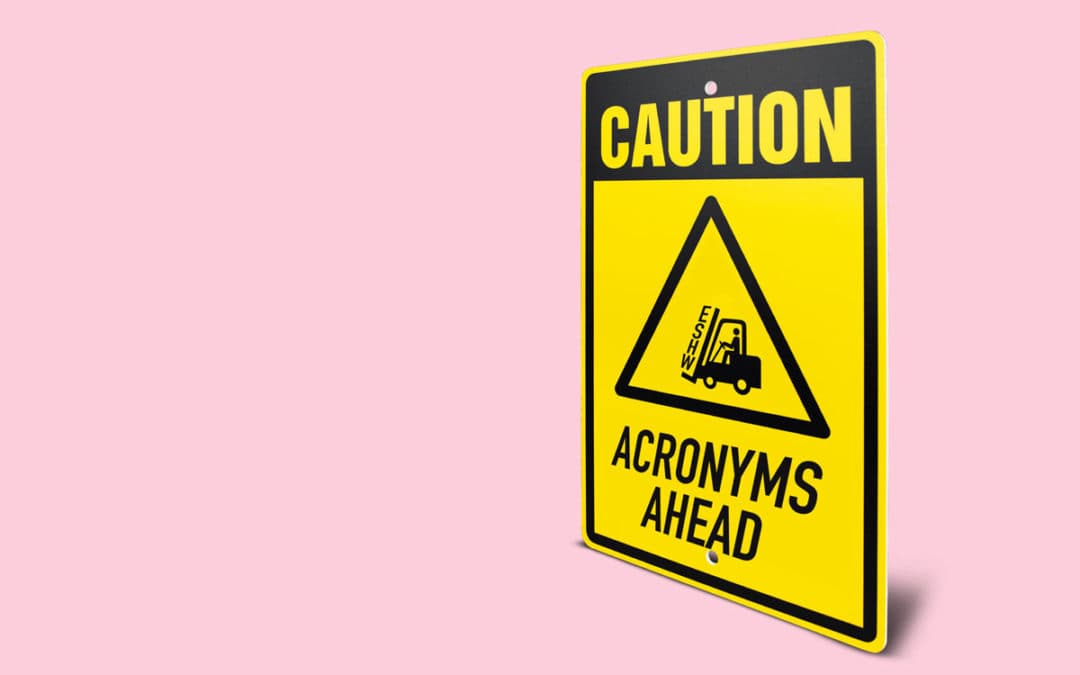Workplace Health and Safety (WHS), Occupational Health and Safety (OHS) and Health, Safety and Environment (HSE). With so many acronyms it’s no wonder people are confused about what it all means.
Is There a Difference Between WHS and OHS?
The two most common terms for health and safety at work are WHS and OHS. If you’re wondering if there’s a difference between the two, the answer is no. Workplace Health and safety is just the new term for occupational health and safety.
The change in terminology came in early 2012 when new WHS laws began in most states and territories of Australia. Before then OHS laws differed from state to state. The state and territory governments agreed to develop the WHS Act and Regulations to base their health and safety laws, so there was more consistency across the nation.
HSE is a less commonly used term. It’s more likely to be the name of the department or policy that oversees the health and safety of staff and the environment they work in.
Workplace Health and Safety
WHS is a set of employer obligations that include:
- Providing safe work premises
- Identifying workplace hazards
- Providing safety equipment where required
- Demonstrating to workers how to fulfil their duties safely
- Providing a WHS induction for all new staff
- Taking reasonable steps to avoid workplace injuries
- Assessing risks and implementing measures to control them
- Having workers’ compensation insurance for employees
Furthermore, workers are obligated to look after the health and safety of themselves and colleagues by:
- Complying with health and safety instructions given
- Using any personal protective equipment that has been provided to them
- Not interfering or misusing any equipment provided for their workplace’s health and safety
- Not wilfully placing themselves or anyone else at risk
RELATED: What is Human Organisational Performance?
Who Oversees WHS Obligations?
SafeWork Australia provides the national policy to improve work health and safety as well as workers’ compensation arrangements across Australia. SafeWork also offers education, training and advice on incorporating safety management into organisations.
Each state and territory in Australia has an authority that enforces WHS laws and administers the workers’ compensation scheme.
Below is a list of the relevant authorities in each state and the government department they belong:
WorkSafe WA – Department of Mines, Industry Regulation and Safety
SafeWork NSW – Department of Finance, Services and Innovation
WorkSafe Victoria – Department of Treasury and Finance
SafeWork SA – Attorney General’s Department
Workplace Health and Safety Queensland – Office of Industrial Relations
WorkSafe ACT – Treasury and Economic Development
NT WorkSafe – Department of Attorney General and Justice
WorkSafe Tasmania – Department of Justice
Why Does it Matter?
Injuries and disease occurring in the workplace cost the Australian community $61 billion per annum. More than 3,400 workers died in workplace accidents in the 14 years to 2016. In 2016 the lowest fatality rate was recorded – 1.5 fatalities per 100,000 workers.
Compensation stats show 90% of serious claims in 2014-15 were due to injury, and musculoskeletal disorders and diseases accounted for 10% of serious claims.
RELATED: Chasing the 0: Can you Really Prevent All Workplace Accidents?
What’s in the WHS Name?
It doesn’t matter what name a company uses to refer to workplace safety. Business owners need to know they are legally required to meet their WHS obligations to ensure the safety of employees, customers, visitors, contractors, suppliers and volunteers.
The number of fatalities and injuries will continue to decline with ongoing efforts by all employees and the larger community on WHS. What we call workplace health and safety will no doubt change again with time. The name isn’t important, it’s the outcome on Australians that is.
Get in touch today if you need assistance with health and safety at your workplace.


